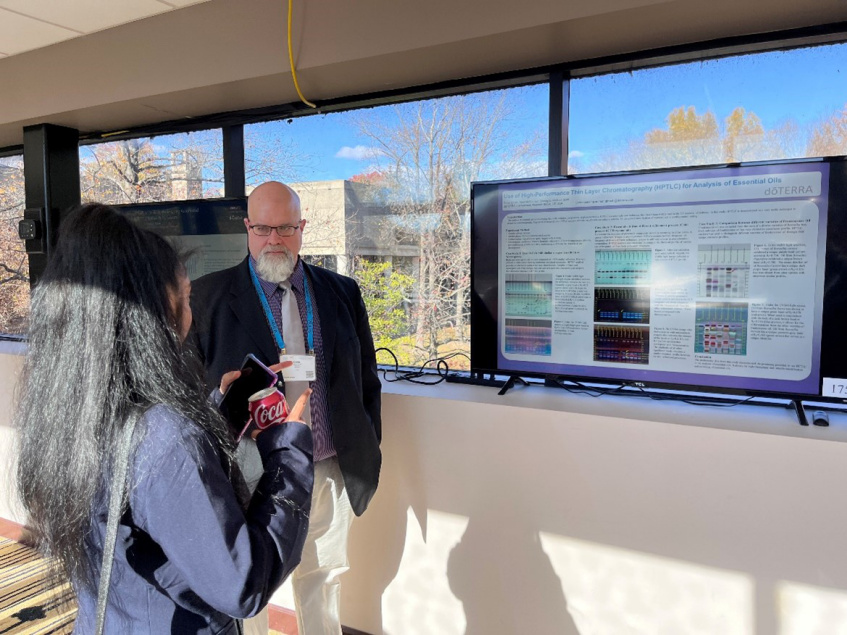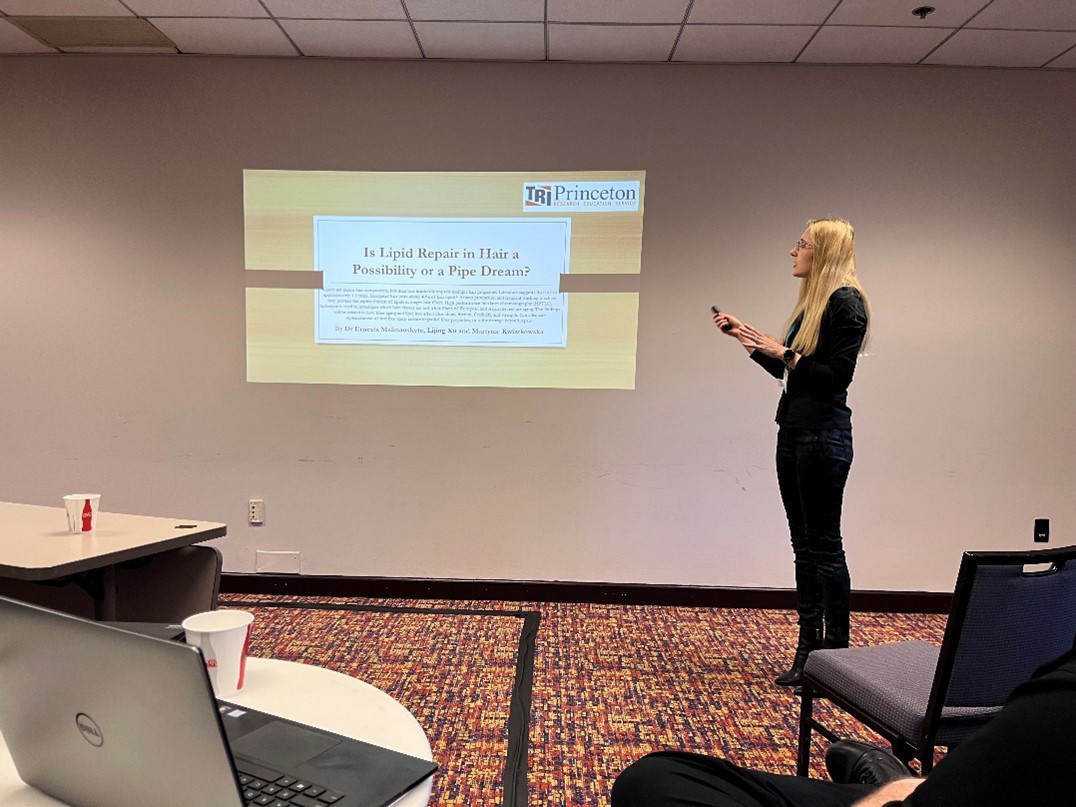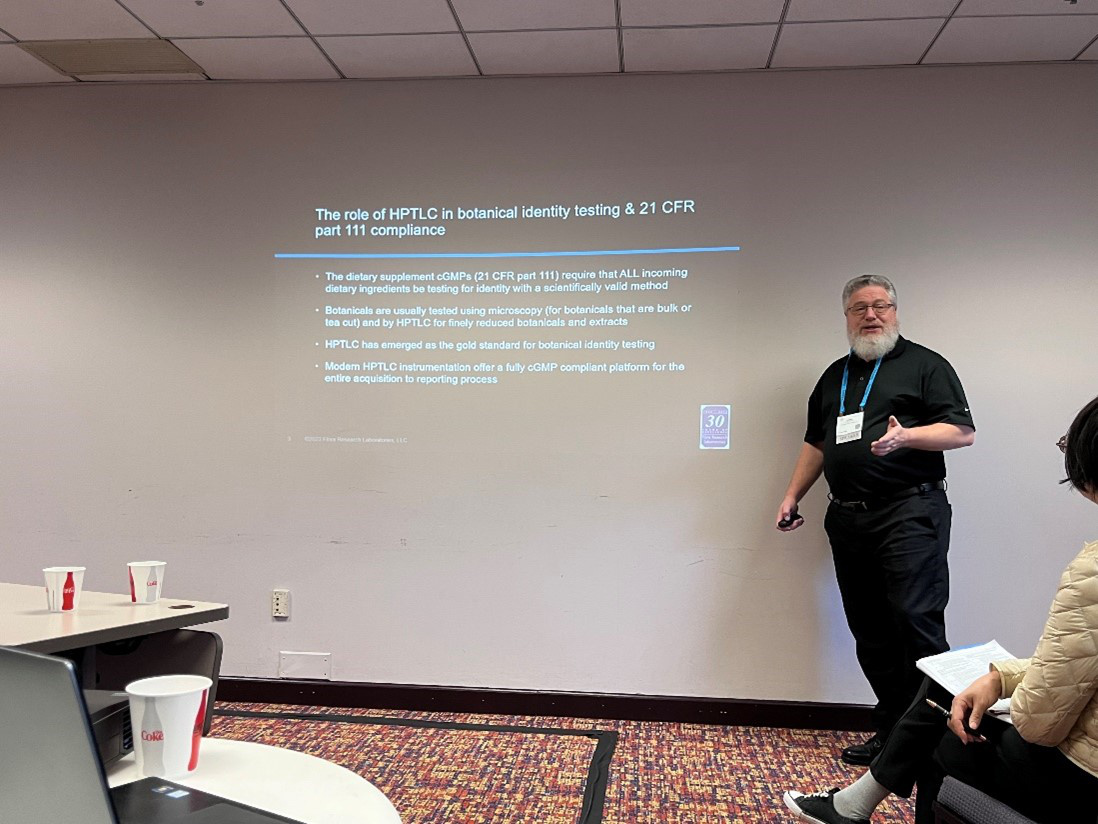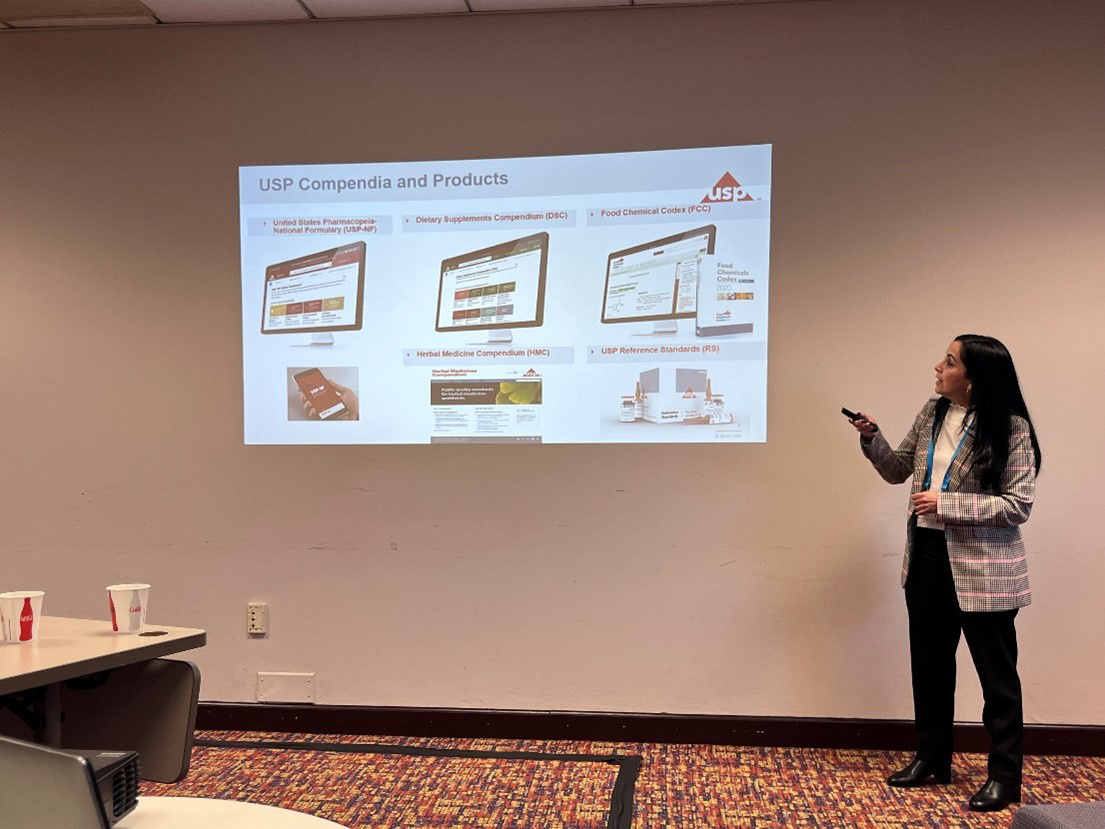
Recent Developments in High Performance Thin Layer Chromatography at Eastern Analytical Symposium
Like every year, the Eastern Analytical Symposium was held at Plainsboro, NJ, from November 13th to 15th, 2023.
The North America chapter of the HPTLC Association conducted a one day HPTLC short course on Sunday 12th, for more information about the topics discussed, please click here.
We also had a poster presentation and an HPTLC technical session chaired by Dr. Leonel Santos where five speakers presented diverse research works using HPTLC. The title and abstracts can be found below.
- High-Performance Thin-Layer Chromatography PRO as a Quality Control Tool in Routine Analysis, Wilmer Perera, CAMAG Scientific, Inc., Shaune Liendo and Diana Catalan, Cape Fear Community College.
- Is Lipid Repair in Hair a Possibility or a Pipe Dream? Ernesta Malinauskyte, Lijing Xu, and Martyna Kwiatkowska, TRI Princeton.
- High Performance Thin Layer Chromatography - Accurate Mass Spectrometry for the Rapid Identification of Unknown Compounds, James Kababick, Stacy Wise, Chanze Jennings, Flora Research Laboratories.
- USP Standards for European Elder Berry Dietary Ingredients: HPTLC Test Solutions to Address Quality and Adulteration Issues, Maria Monagas, United States Pharmacopeia Convention, Tiên Do, Eike Reich, CAMAG.
- Equivalency of DNA Sequencing vs. HPTLC Chromatographic Analysis vs. Botanical Microscopy Methodologies for Botanical Identity: A Statistical Evaluation, Anthony Fontana, Sidney Sudberg, Dinah Yu, Khanh Tran, Alkemist Labs, Robert LaBudde, Least Cost Formulat
- Applications of HPTLC for Testing Essential Oils, Gavin Brush, doTerra (poster)
1-Abstract
With the new fully automated High-Performance Thin-Layer Chromatography (HPTLC) PRO system, multiple samples can be analyzed in sequence, overcoming the environmental effects produced by the previous open system. HPTLC PRO also adds a more rigorous control of the gas phase and is a throughput technique for the quality control of plant materials among other applications. This presentation aims to discuss important concepts, such as standardization, comprehensive fingerprint and reviewing more recent ideas like the universal system suitability test, complementary developing solvents for untargeted analysis and other solvents for targeted analysis. The importance of HPTLC as a quality control tool in a dietary supplement setting by showing different case studies will also be covered.
2-Abstract
Lipids are minor components of hair, but their loss can drastically impact various hair properties. Literature suggests that European hair loses approximately 40% of its lipids in just 1.5 years*. Sebum production and frequent washing practices may hinder the replenishment of lipids in longer hair fibers. The High-Performance Thin-Layer Chromatography (HPTLC) technique is employed to investigate the classes of lipids lost as fibers from European and Asian descent age. The findings will be correlated with how fiber aging and lipid loss affect stiffness, bending properties, and strength. Can the adequate replenishment of lost free lipids restore degraded fiber properties, or is the damage beyond repair?
3-Abstract
The dietary supplement cGMPs (21 CFR part 111) require 100% identity testing of all dietary ingredients including botanicals. Planar chromatography methods have become the gold standard for the identity testing of processed botanicals (powders and extracts). However, botanical planar chromatographers are often plagued by known bands that call into question the authenticity of a given botanical under test. Recently, significant advances have occurred in planar chromatography that offer additional dimensions to interrogating data such as unknown bands. This talk will examine the use of HPTLC coupled to accurate mass spectrometry and other hyphenated techniques that can offer additional insight into unknown bands that can answer the question: is it authentic or adulterated? Case studies will be provided.
4-Abstract
The demand for dietary ingredients derived from European Elder berry (Sambucus nigra L.), traditionally used to alleviate cold or flu symptoms, has drastically increased due to the COVID-19 pandemic which has led to increased reports of adulteration. In 2021, in response to stakeholder inquiries, USP hosted the Elderberry Standard Development Open Forum to address the adulteration crisis and the need for new quality standards. Since then, USP has been actively working in the modernization of the currently official monograph for European Elder berry Dry Extract and in the creation of a new monograph for European Elder berry Aqueous Dry Extract, both published in PF 49(3) (May/June 2023). Other new standards under development include ingredient monographs for liquid extracts, juice concentrates and dry juices. The use of confounding materials rich in anthocyanins such as black rice extract and purple carrot juice, undeclared synthetic dyes and species misbranding, are among the most common types of adulteration in elder berry products. In addition to adulteration related to identity and purity, manufacturing-related issues resulting in anthocyanin thermal degradation during the processing of juice concentrates as well as excessive use of carriers during the juice spray drying process can also lead to quality issues in these types of ingredients, affecting both identity and composition. These challenges demanded the development of simple, selective, multipurpose screening methods for the detection of quality and adulteration issues.
This presentation summarizes the work conducted by USP in collaboration with CAMAG for the development of new HPTLC methods for different applications: (1) an identity test based on the detection of anthocyanins and other flavonoids, and (2) an adulterant test based on the detection of synthetic dyes. Examples of the application of these tests to address issues related to ingredient specifications, species differentiation, detection of adulteration, and other quality matters in different types of European Elder berry ingredients will be presented.
5-Abstract
A small-scale single laboratory study was carried out to illustrate methodology for establishing equivalence between different analytical methods used for identifying botanicals. Samples of different lots from different sources of known inclusion (known positive) and exclusion (known negative) species were obtained, and measurements made in replicate by DNA, high performance thin layer chromatography (HPTLC) and microscopy on each sample. Special statistical methodology for proving the claim of equivalency among methods is illustrated and the results discussed.
6-Abstract (poster)
The current practice in the United States for identification of essential oils is the use of gas chromatographic (GC) profiles. The use of GC presents limitations due to throughput, expense and the nature of the chemicals being analyzed. High-performance thin-layer chromatography (HPTLC) presents an alternative technique of essential oil identification analysis. By adapting existing monographs from the European Pharmacopoeia, we successfully established a single HPTLC method for the identification of more than 30 different types of essential oils with high specificity. This allowed for a high throughput simultaneous analysis of multiple different types of essential oils. This would allow an increase of sample throughput by at least 5-6 fold compared to GC profile analysis. HPTLC also has shown promise in differentiating essential oils with very similar chemical profiles that are difficult to distinguish using traditional testing. There is also potential for this same method to be expanded to identify other type of essential oils or establish limit tests for certain compounds of interest in essential oils. Adulterant and contaminant screening may also be integrated as part of a single test method, thus eliminating the need for multiple tests. Overall, this HPTLC assay is demonstrated as an useful technique for essential oil quality control testing.






Comments
Leave a comment